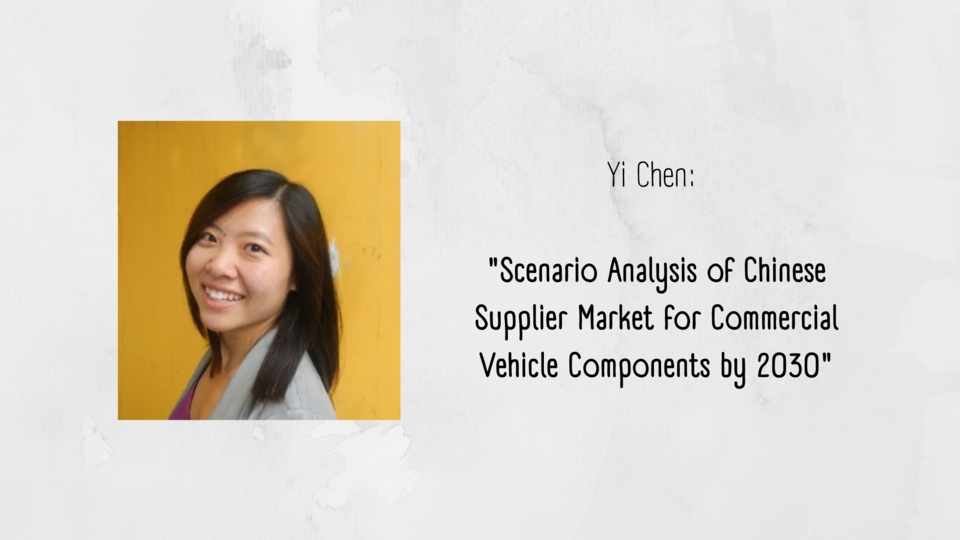Globalisation, which has been advancing since the 1990s, was probably the most significant development for China on its way to becoming a powerful economic empire. The figures of 1.4 billion inhabitants and a GDP of the equivalent of 14.7 trillion US dollars in 2020 alone speak a clear language: the influence on the world economy is enormous, the trend is still rising. Due to low production costs at a high manufacturing speed, the opportunity to open up new markets and the constant availability of materials and technologies, China is now an attractive core country for international procurement. Recently, the country has also been able to score in global sourcing as a supplier for international car manufacturers. In 2018, China recorded a proud export share of 34.8 billion US dollars and even made it to fourth place in the international ranking, only just behind the core automotive markets of Germany, Japan and the USA. The People's Republic's efforts to further increase its own productivity and manufacturing capacity and to offer more innovative products have recently generated unprecedented attention worldwide. However, current world events have recently presented an uncertain and troubled view of the country. The ongoing trade dispute between China and the USA as well as the weakened supply chains in the wake of the Corona pandemic are hitting the international supplier market in particular and posing a massive threat to short- and long-term supply security. At the same time, China wants to change its image across the board and develop from a low-cost supplier to a high-end manufacturer. In the long term, the highest possible quality products and technological innovations "Made in China" are to be the new guiding culture, with a supplier market for automobiles as an economic accelerator. The focus is primarily on sustainable mobility solutions, so that in M&A accounting China is concentrating first and foremost on manufacturers of automation, electrification and lightweight construction. Against this backdrop, our MBA student Yi Chen's master's thesis opens up the question of whether and how this development can succeed. How should international vehicle manufacturers (OEMs) adapt their global sourcing strategies? Taking into account the complex, dynamic, uncertain and volatile processes of a modern VUCA world, Yi Chen outlines four possible scenarios of what the Chinese supplier market could look like by 2030 and, with her work, allows the long-term assessment of plausible future prospects for the market.
Possible futures of the Chinese market
In the first scenario, the supplier market experiences full government support with rapid technological progress. Due to the high financial investments, total production costs can be kept low and rapid technology upgrades can be provided, making China an attractive supplier in international competition. For OEMs, the opportunity lies in acquiring high-tech components at a low price, while cheap low-tech products are more likely to be sourced from lower value-added countries. However, state control also brings problems. Due to a largely closed market, foreign buyers have only limited access, while negotiations are extremely difficult. Vehicle Manufacturers should therefore bundle their sourcing volume with other buyers and maintain close political contacts. Furthermore, the Chinese market needs to expand strongly in order to be more innovative and could face a lack of competitive pressure in a closed system.
There is also the possibility of a market with stagnant technological progress, despite high government subsidies. China's main strength remains its low manufacturing costs, which is mainly ensured by the expansion of skilled personnel and advanced technology, thus promising high productivity. However, weaknesses are evident in research & development and domestic core technologies, which fosters a lack of innovation competence. While low-technology vehicle components of good quality can be sourced at a low price, the risk remains in the closed market. To participate, certain purchase licences could be waived, which would in turn negate low sourcing costs. OEMs should therefore make a thorough calculation of the Total Cost of Ownership before making procurement decisions.
In the "High technological progress, despite lack of government support" scenario, China offers a leading market in core technologies. However, as the domestic economy is open, it could be increasingly flooded with foreign players, massively increasing competitive pressure for Chinese suppliers. To remain competitive, they will have to invest more in R&D, which in turn will provoke a price increase on the product side due to the lack of government subsidies. The market will therefore inevitably thin out and only large suppliers will be able to manage the change. OEMs will have the opportunity to source high-quality high-tech components without barriers and market regulations, but the cost advantage of Chinese products will lapse. Production capacity may also suffer from market thinning. The recommendation is therefore either to perceive China as a secondary market or to set up own production facilities in the country to minimise logistical risks.
The Chinese worst-case scenario is ultimately "zero state support and stagnating technological progress". Due to the open market, there is high competitive pressure, resulting in price increases for suppliers to compensate for production and operating costs. Smaller suppliers cannot withstand this change and are either taken over or excluded. Consequently, the thinning of the market also affects the low-tech segment. Finally, in the scenario, China is considered an unattractive sourcing destination with low value added. OEMs are therefore advised to view the market only as an alternative sourcing option alongside other primary supplier markets.
Which of the four scenarios will ultimately prevail in China in 2030 cannot be reliably predicted due to the many uncertainties and a relatively long time span. The student Yi Chen therefore concludes with the recommendation that vehicle manufacturers should constantly observe the development trends of the Chinese supplier market in order to take appropriate measures in time.
